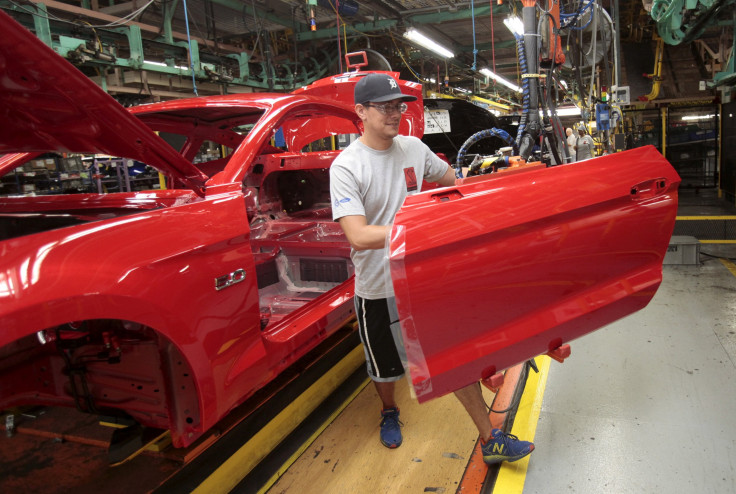April Jobs Report: The US Labor Market In Five Charts

April’s jobs numbers arrived with a thud, falling well short of Wall Street’s estimates. With 160,000 jobs added to payrolls, compared to projections of 200,000, employers finally appeared to react to the economic weaknesses that have marked the first months of the year, which saw gross domestic product growth slow to a tepid 0.5 percent.
The soft job totals aren’t the end of the story, however. Labor force participation also dipped, a pause in what had been a remarkable rally in labor force gains. Meanwhile, wage gains remained solid, giving hope that workers’ bargaining power continues to ebb.
Below are five charts outlining the most important figures in April’s employment numbers.
1. Jobs Added
The 160,000 jobs added in April brings the three-month average employment gains down to 200,000. The Bureau of Labor Statistics revised previous readings as well, bringing February’s total to 233,000 from 245,000 and March to 208,000 from 215,000.
2. Wage Gains
Workers’ average hourly pay was a small bright spot in April’s employment figures. Average hourly earnings for nonsupervisory workers tipped up 8 cents, for a year-over-year gain of 2.5 percent. That compares to 2.3 percent in March.
The second half of 2015 saw a brief rise in wage growth, peaking at 2.6 percent year over year in December before easing back down. April’s numbers provide some hope that wage gains, propped up by state and local minimum wage increases, could be durable. But wage growth still remains below its 20-year average of 3 percent.
3. Labor Force Participation
In March, enough people who had previously sat on the sidelines rejoined the labor force that the unemployment rate actually ticked up, from 4.9 percent to 5 percent, a piece of counterintuitively good news. In the past six months, the share of Americans participating in the labor force — that is, working or actively seeking work — has risen markedly, reversing years of steady decline.
In April, that trend ran out of steam. The participation rate fell to 62.8 percent from 63 percent, the first time in six months that the measure has fallen.
4. Retail Woes
Industries that have been ailing since the end of 2015 continued to feel pain, notably mining and manufacturing, which had been hit by unfavorable exchange rates and low commodity prices. But another industry notably joined the ranks of job losers in April: retail.
Though consumer spending has been weak and retailers have reported softening sales, retail hiring remained brisk in the first months of the year; Deutsche Bank economist Joseph Lavorgna called the trend “unusually strong.” Last month, however, the retail sector lost 3,100 jobs, after gaining 377,000 in the 12 months before. April was the first time since February 2014 that the retail sector had shed jobs.
5. Coming In From The Cold
The economy benefits when working-age adults move from the sidelines of the labor force — whether they were in school, ill or discouraged from looking for work — into some form of employment. The flow of Americans from the bench and into the labor force had been strong.
But that trend slowed in April as fewer adults moved directly into jobs from the sidelines. That helps explain why the participation rate dipped; fewer adults moving into employment means more staying outside the job market.
© Copyright IBTimes 2024. All rights reserved.












